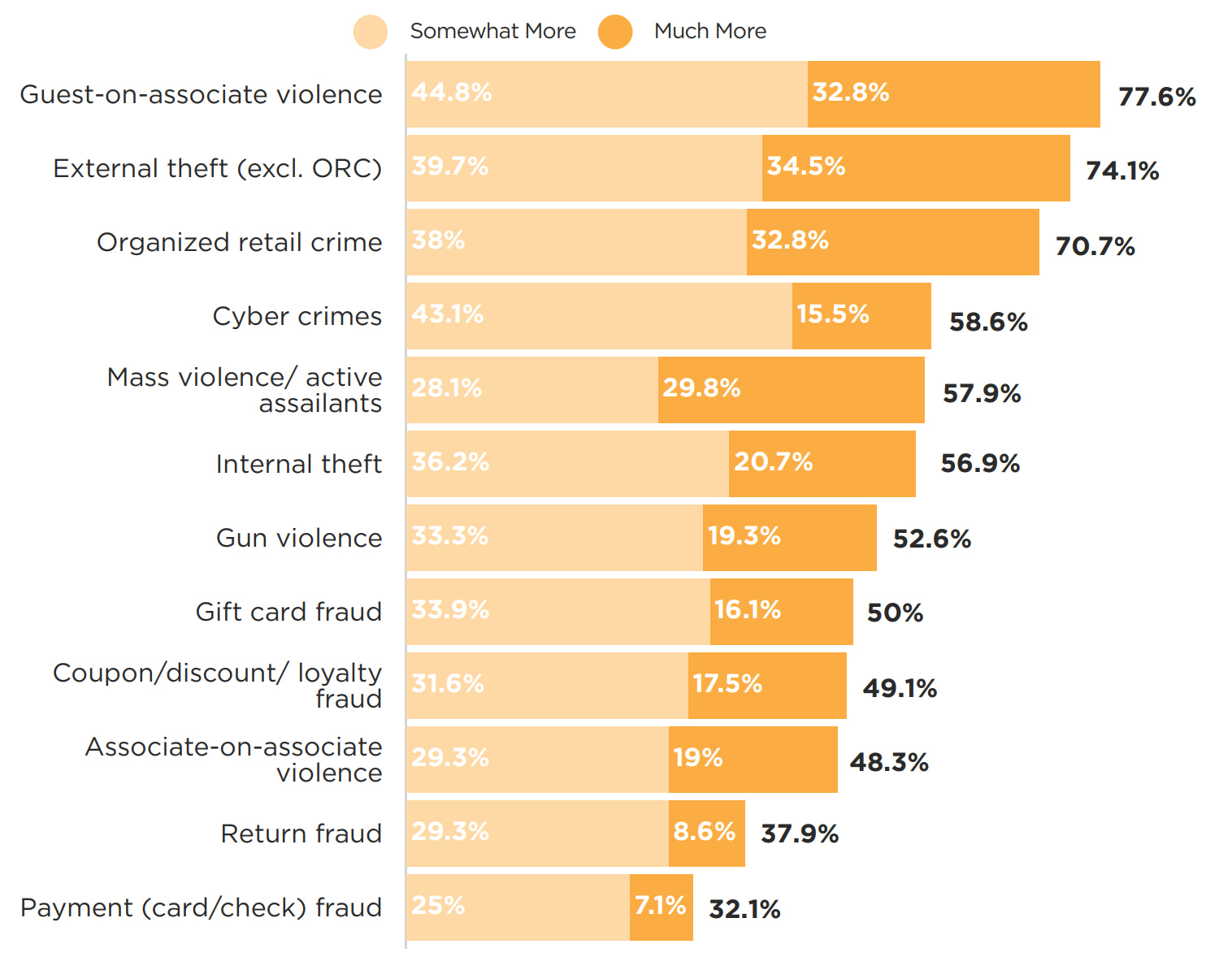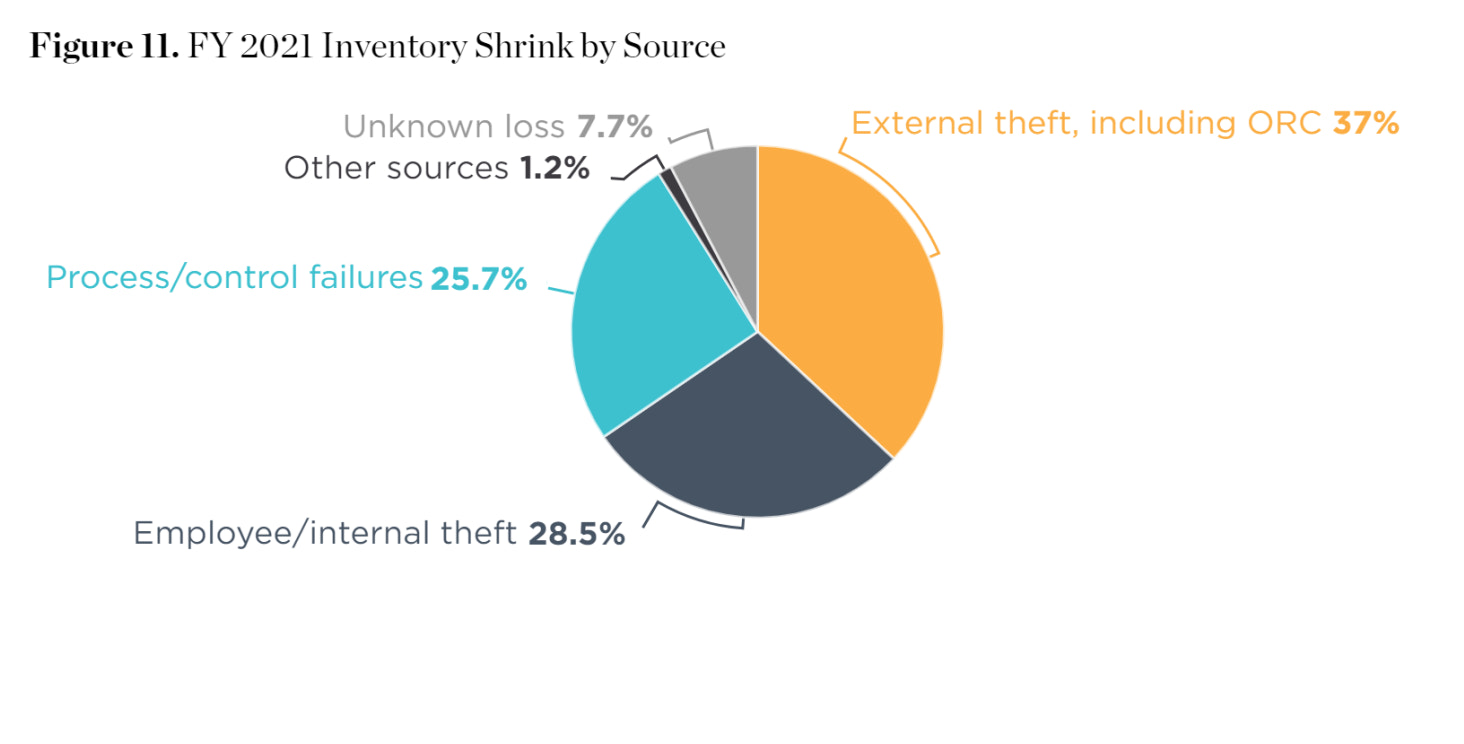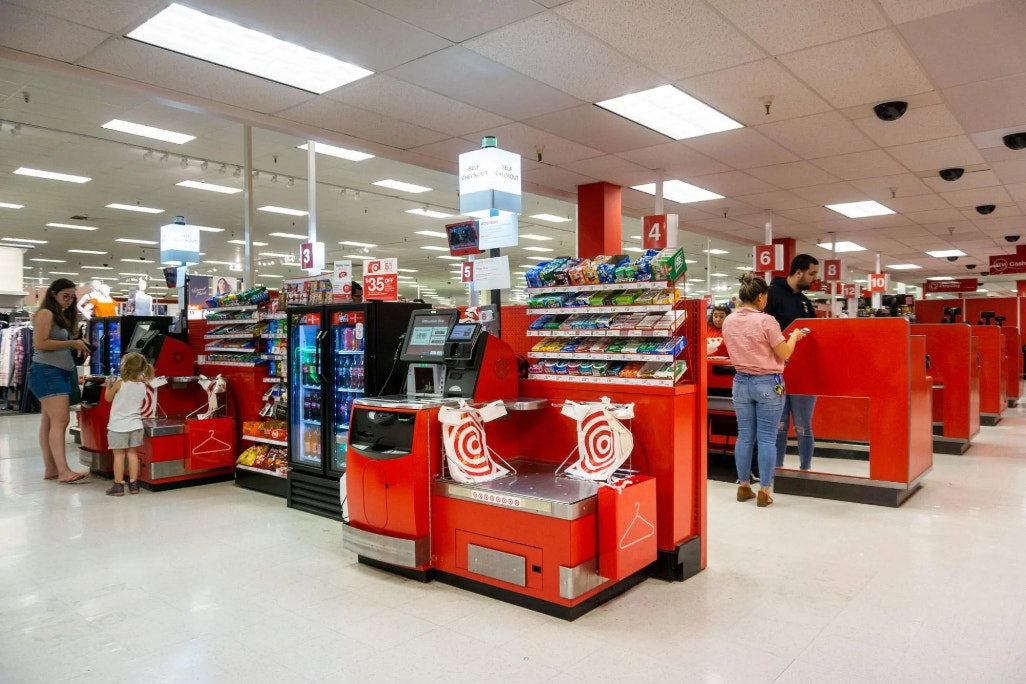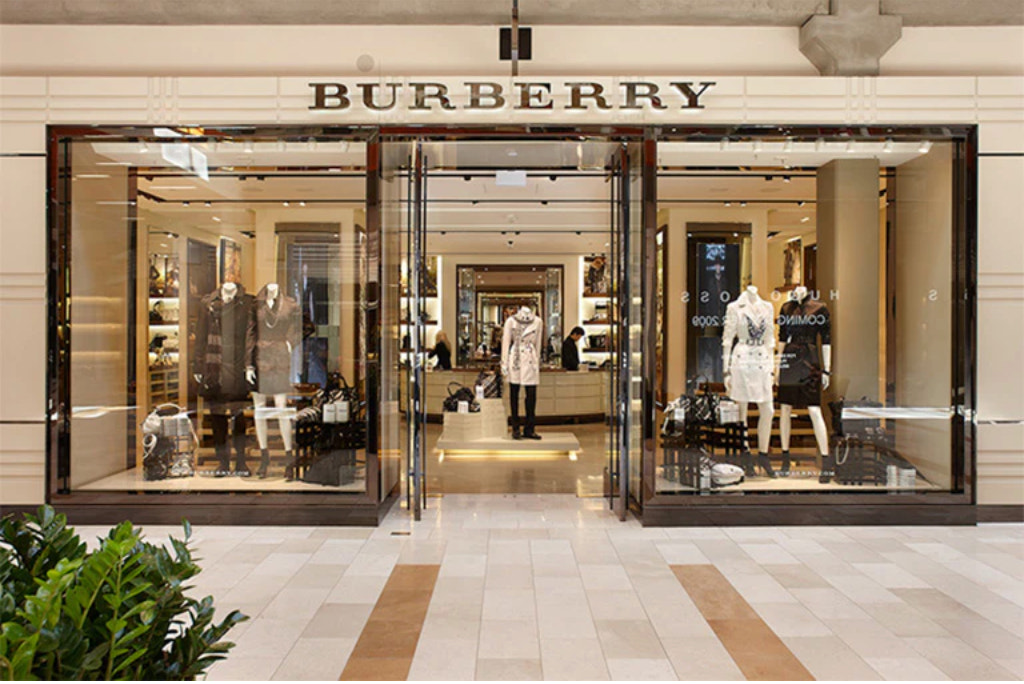Table of Contents
Loss prevention is how you prevent inventory loss and preserve profits. It’s a critical concern for retailers, amounting to over $94.5 billion in U.S. retail losses in 2021, up from $90.8 billion in 2020.
It’s no wonder some 45% of retailers increased their loss prevention budgets in 2022. They know that theft, fraud, and unexplained inventory shrinkage can quickly eat up profits.
Managing loss prevention can feel overwhelming, especially if you’re a small to mid-sized operation. By implementing a few key security measures, however, you can reduce your risk of loss and improve profitability. This guide discusses the top types of loss and strategies to prevent them, with examples from popular retailers.
What is loss prevention?
Loss prevention is any practice designed to reduce a business’s losses from theft, fraud, and operational errors. The goal of loss prevention is to eliminate preventable loss and preserve profits. It’s primarily found in retail, but also exists in other business environments.
Purpose of loss prevention
Retail loss prevention consists of identifying shrinkage causes and following up with solutions. Businesses often implement strategies like hiring a loss prevention manager or installing security cameras to improve loss prevention and increase profits.
Loss prevention continues to be a challenge on both digital and retail fronts, from skilled cybercriminals to shoplifters who steal low-priced items. But that’s only one element of loss prevention.
According to The 2022 National Retail Federation’s Retail Security Survey, loss prevention teams are also working to protect store associates and customers.
A majority of respondents report increased incidents of:
- Guest-on-associate violence (77.6%)
- External theft (74.1%)
- Organized retail crime (70.7%)
- Cyber crimes (58.6%)
- Mass violence / active assailants (56.9%)

Loss, also referred to as retail shrinkage, robs your retail business of its profits. The higher your shrinkage rate, the harder it will be for you to stay in business. Addressing loss can lead to unexpected benefits beyond saving money, including better employee training, improved security and prevention measures, and better customer service.
Causes of inventory loss
- Organized Retail Crime (ORC), external theft, or shoplifting. Retail theft or shoplifting is a major cause of loss for many businesses. This includes unauthorized removal of physical goods, money, or other valuable items. Shoplifting is often perpetrated by customers or employees with the intent of stealing goods from the business without paying for them. Retail stores are particularly vulnerable to shoplifting due to easy access to merchandise and lack of supervision.
- Fraud or internal theft. Fraud or internal theft happens when a business is manipulated for financial gain. It occurs in various scenarios, such as misappropriation of funds, time theft, falsified expense reports, etc. Internal theft can be caused by both customers and employees and can cost organizations thousands of dollars annually.
- Accidents, fire, or natural disasters. Various losses can result from unexpected events, including physical items, data systems, confidential information, inventory, and many more. Businesses need to develop a plan to minimize these risks and recover from these losses.
- Administrative errors. Inaccurate record keeping can result in significant losses to a business, including incorrect inventory counts, missed deadlines, duplicate orders, and incorrect payments. Maintaining accuracy and avoiding major losses requires keeping accurate records at all times.
The latest data from NRF shows that the top sources of inventory shrink are external theft, internal theft, and process failures.

Loss prevention strategies
1. Create a security policy
Over 93% of retailers have a security policy or “code of conduct” for preventing loss and keeping people safe. For your store, outline specific rules and expectations for employees and customers.
For employees, your policy may include:
- Locking the store’s doors at night.
- Not allowing certain items within your store.
- Guidelines for handling difficult situations, like shoplifting or fights.
For customers, your policy may include:
- Guidelines for respecting other customers and employees.
- Directions for reporting potential theft to store staff.
- Rules against stealing or damaging items.
Train your employees on the rules and expectations of your security policy. Meetings and trainings are good ways to remind employees about the policy. To remind customers about the rules, you can also post signs around the store.
If someone breaks your policy, you can take action to enforce the rules, like asking the person to leave the store, alerting a security officer, and/or calling local law enforcement.
2. Use CCTV throughout your store
You can also keep your store safe by monitoring activity with CCTV (closed-circuit television). These cameras can watch entry points into the store, like the customer entrance and loading docks. They record what’s going on so you can see if anyone’s trying to get in who shouldn’t.
Using CCTV also acts as a deterrent for potential thieves. It gives the appearance of strong security and shows you take losses seriously.
3. Invest in a POS system with security features
POS (point of sale) systems with security features can help you prevent loss. A POS system is used to process transactions in retail stores. Typically, it includes a tablet or computer, a cash drawer, and a card reader, allowing employees to process sales easily and accept payments.
Examples of security features include:
- Employee login system that requires people to enter a password for access. Then you won’t have to worry about unauthorized access or theft.
- Real-time sales and inventory tracking. This helps you see quickly and easily which items are in stock and can help identify missing items or unexpected fluctuations in sales.
Investing in a POS system with security features can make a lot of sense for retail store owners. It helps protect against potential loss and gives insight into sales and inventory.
4. Build awareness and education for loss prevention
It’s important for retailers to invest in effective employee training to prevent shoplifting and other types of fraud. Educating staff on recognizing and preventing crimes can further protect your business and customers.
There are many types of awareness and education programs. The NRF’s National Security Survey asked which programs retailers used to train and educate team members about loss prevention and retail asset protection.
Here are the top initiatives they found:
- Anonymous telephone “hotline” program (87.9%)
- Active shooter training programs (84.5%)
- Bulletin board notices/posters (82.8%)
- Internet/computer-based training videos (79.3%)
- Face-to-face training during new hire orientation (74.1%)
- Anonymous online/email notification program (60.3%)
It’s easy to get loss prevention training. You can take an online course from Loss Prevention Academy or Loss Prevention Foundation or hire a third-party security and loss prevention expert to train your employees.
5. Create an effective inventory control system and monitor it regularly
Inventory control is a system that retailers use to manage and track their inventory levels. This includes tracking product flow in and out of the store and keeping accurate sales records. You can reduce inventory losses and boost profits by implementing an inventory control system.
Follow these steps to implement an inventory control system:
- Choose the inventory control method that works for your business. You can do this using perpetual inventory, where stock levels are continually updated, or periodic inventory, where stock is counted regularly.
- Set up a system for tracking inventory levels. You can do this manually or with software, like spreadsheets or an inventory management system.
- Maintain inventory records and monitor stock levels regularly. Having alerts set up for low stock levels and reordering products as needed can help.
- Regularly audit inventory levels to make sure they’re accurate.
- Implement strict access controls and monitoring systems to prevent inventory loss for high-value or high-risk products.
6. Invest in RFID tech
RFID systems have become a popular retail loss prevention technology, with nearly 39% of retailers using them. In recent years, RFID has replaced Electronic Article Surveillance (EAS), a traditional retail theft measure, to improve inventory visibility across the supply chain.
RFID, or radio-frequency identification, tracks and manages inventory by attaching small tags to products. A special machine, called a RFID reader, can read these tags quickly and easily.
RFID can help retailers prevent losses in many ways. For example, you can use RFID tags and readers to track the movement of products throughout the store.
You can attach RFID tags to products and install RFID readers at the store’s entrance and exit. If a customer leaves the store with a product bearing a RFID tag, the reader will pick up the signal and sound an alarm. It can alert store employees to possible thefts so they can take action.
Loss prevention tips
- Prescreen new hires. Fully vet applicants when hiring employees for your store. Check their previous employment and references. See if they have any record of theft or shoplifting. Make sure you are hiring people you can trust.
- Put up anti-theft signs. Signage around your store can help keep losses at a minimum. These are small reminders for potential shoplifters that tell them not to steal from your store. It can help deter people who don’t want to pay for items, especially if they know they are on camera.
- Use a third-party accountant. Work with an external accountant to ensure your accounts are accurate and up-to-date. They can give you an unbiased look at your records, identify any discrepancies in your profits and losses, and help you track inventory more effectively.
- Use your POS to identify loss. Sales and inventory reports help identify trends in missing items. It can also highlight patterns in gift card sales, returns and exchanges, and provide insight into who was working during times when suspicious activity took place.
- Hire a loss prevention specialist. These professionals are trained to identify potential areas of vulnerability and implement measures to help combat theft or fraud.
Examples of successful loss prevention in retail
Now that we’ve covered the basics, let’s look at some successful loss prevention plans out there in the wild. Whether your current budget is $100,000 or $0, every store can learn from these case studies.
Sears Canada

Although Sears Canada finished shutting all its doors in early 2018, we can still learn from its example on the loss prevention front.
Sears Canada focused on combining old standbys and cutting-edge technology. It armed loss prevention personnel with the best tools, not just the newest. It relied on video surveillance in all Sears Canada stores—but not to catch shoplifters after the fact.
The loss prevention team used data and video analysis of in-store surveillance cameras to identify patterns, like areas of the store where customers spent a lot of time. By analyzing these patterns and sharing them across all stores, the team was better able to train their focus on “hot spots,” or areas prone to theft activity, and to catch shoplifting behaviors before they became a problem.
Target

One of the bigger retail developments of the past decade has been the appearance of self-checkout lines at major chains. Eliminating the cashier (scanning each item, interacting with customers, observing behavior) presents an obvious barrier to loss prevention efforts.
Target approached this problem by leaning hard into one of the anti-shoplifting tactics above: conspicuous surveillance. If you’ve gone through self-checkout at a Target store recently, you might have noticed—right at eye level—your own face staring back at you. “You’re being monitored,” it reminds you. Target also trains surveillance on the scanner, so loss prevention personnel can see which items the customer scanned and which they didn’t.
Meijer

It can be cumbersome and time-consuming to look for proof (or lack thereof) of both employee theft and ordinary shoplifting when it comes to surveillance. Loss prevention personnel may watch an employee’s entire shift only to find no evidence of theft—not exactly an efficient process.
Meijer’s loss prevention team took a different approach. They use intelligent point-of-sale monitoring to collect mounds of data. Then they let the software analyze it all to identify events that don’t fall into the normal pattern of transactions. That means they spend more time mitigating losses and eliminating the causes of retail shrink that fall within their control.
Burberry

The use of RFID tags is becoming more prevalent in the retail industry. It has the potential to track items throughout the supply chain until final sale. Burberry uses RFID technology to identify products using radio signals. The RFID technology is found in a small tag typically in the swing ticket, and embedded into the product through a textile RFID label.
As Burberry explains on its website, “We have started to initiate the use of RFID technology throughout our Burberry product lines to assist with stock and quality control, while also enhancing the customer experience in selected stores.”
The RFID tag also holds bespoke multimedia content specific to the product for customers to watch on in-store display screens or phones. Burberry’s tags communicate with consumers’ phones and give information about where the product was made and recommended design options.
Create a loss prevention plan for your store
Loss prevention in the retail industry is critical. By implementing effective strategies like surveillance systems, employee training, and inventory management, you can keep losses to a minimum and boost profits.
Your store’s loss prevention plan should be tailored to your specific needs and goals so that it balances loss prevention measures with customer experience.
Loss prevention FAQ
What are 5 methods of loss prevention?
Five ways to prevent loss: using access control and surveillance systems, taking inventory regularly, implementing security protocols, training employees on loss prevention, and investing in inventory management.
What are some loss prevention techniques?
Keeping track of cash and other assets is one of the best ways to prevent loss. Setting up surveillance cameras, hiring security guards, implementing security tags, and doing regular audits can also help.
What is the goal of loss prevention?
The goal of loss prevention is to identify and reduce risks that could result in losses from theft, fraud, accidents, or other sources. It seeks to identify threats and vulnerabilities, and use measures to mitigate the potential for losses.
What do loss prevention officers look for?
Loss prevention officers look for any suspicious activity that could lead to theft or loss of merchandise. They also monitor daily activities and inventory levels to ensure store policies are being followed.






